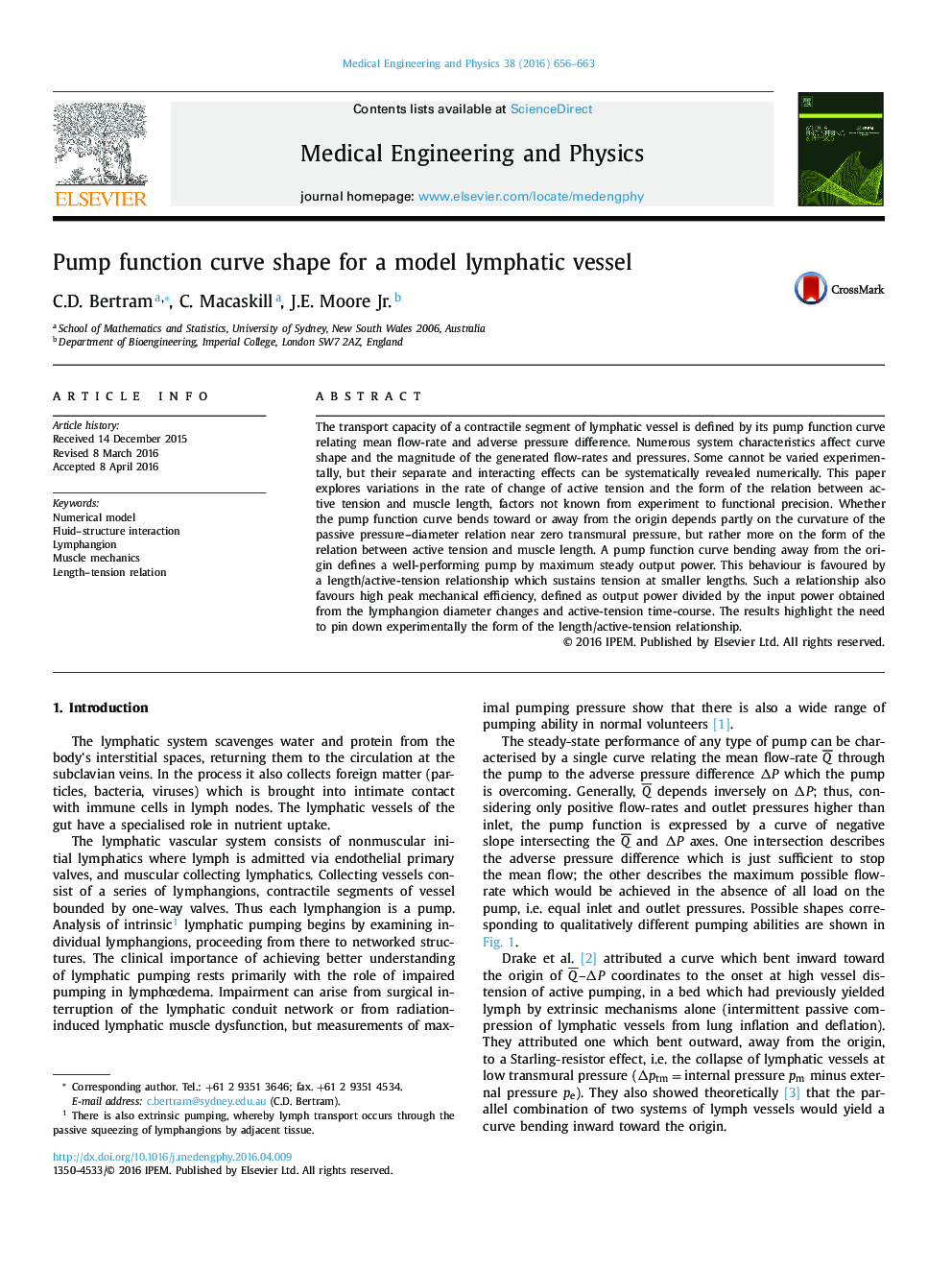| کد مقاله | کد نشریه | سال انتشار | مقاله انگلیسی | نسخه تمام متن |
|---|---|---|---|---|
| 875618 | 910787 | 2016 | 8 صفحه PDF | دانلود رایگان |
• Contractile lymphatic vessels can be characterised by their pump function curve.
• Pump curve shape depends sensitively on the muscle length/tension relation.
• Active tension cannot be measured at all lengths as contracted/passive difference.
The transport capacity of a contractile segment of lymphatic vessel is defined by its pump function curve relating mean flow-rate and adverse pressure difference. Numerous system characteristics affect curve shape and the magnitude of the generated flow-rates and pressures. Some cannot be varied experimentally, but their separate and interacting effects can be systematically revealed numerically. This paper explores variations in the rate of change of active tension and the form of the relation between active tension and muscle length, factors not known from experiment to functional precision. Whether the pump function curve bends toward or away from the origin depends partly on the curvature of the passive pressure–diameter relation near zero transmural pressure, but rather more on the form of the relation between active tension and muscle length. A pump function curve bending away from the origin defines a well-performing pump by maximum steady output power. This behaviour is favoured by a length/active-tension relationship which sustains tension at smaller lengths. Such a relationship also favours high peak mechanical efficiency, defined as output power divided by the input power obtained from the lymphangion diameter changes and active-tension time-course. The results highlight the need to pin down experimentally the form of the length/active-tension relationship.
Journal: Medical Engineering & Physics - Volume 38, Issue 7, July 2016, Pages 656–663
